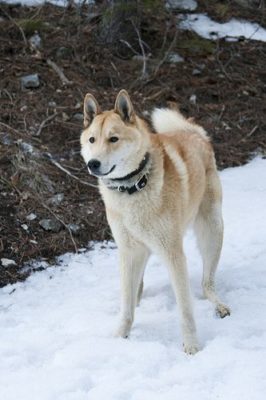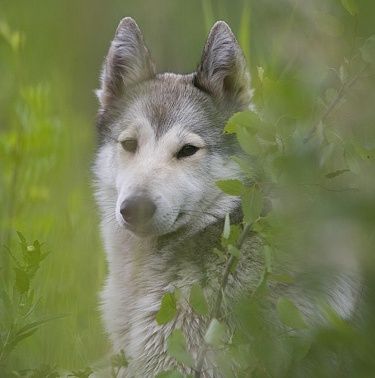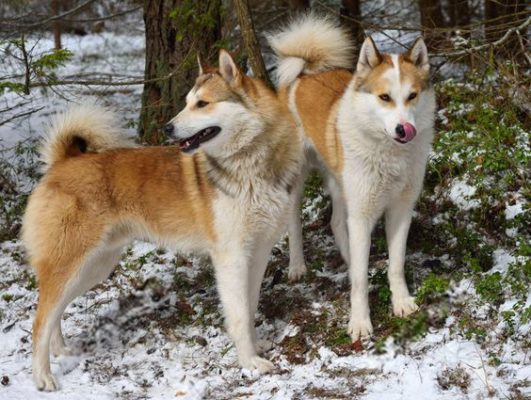West Siberian Laika
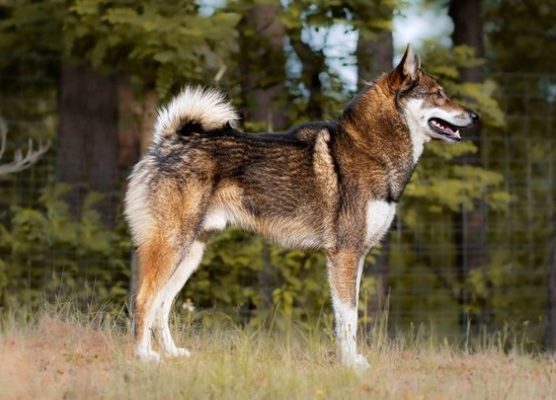
It is a working breed by nature. The inexperienced owner looking for a pet should probably choose a different breed. West Siberian Laikas are often affectionate and loyal to those they trust but are very protective of their owners and property. Most breed members will warn intruders with their bark, but there is a possibility of aggression toward people and other animals if their warning bark is not heard.
Table of Contents
Breed Information
| Another Name | Zapadno-Sibirskaïa Laïka |
| Origin | Russia |
| Height | 55-62 cm |
| Weight | 18-23 kg |
| Fur | Medium length |
| Color | White, gray, pale red |
| Lifespan | 10-14 years |
| FCI Classification | Spitz and primitive types |
| Group | Hunting dogs, dogs for children, guard dogs, sled dogs |
| Price | $100-400 |
Breed Photos
Origin History
The West Siberian Laika is a primitive indigenous hunting breed that shares many traits with its ancestor, the wolf, but has been in humankind’s hands for countless generations; it is a domestic dog breed. There are other huskies, but the West Siberian Laika has hunted mainly with the Khanty of Western Siberia and Russia’s Ural mountainous regions. West Siberian Laikas were used for hunting in the area below the treeless tundra zone, where the dense northern forest begins, and in the forest areas of the Ural Mountains.
These dogs are adapted to forest hunting grounds and used in some areas to produce the sable’s very valuable fur. The sable was nearly destroyed, and when this resource disappeared, so did the huskies in some areas where they were hunted. In the early 1900s, efforts were made to save the West Siberian Laika, and around the 1930s, a more developed breed standard was introduced.
Today, the West Siberian Laika is still widely used as a hunting companion. The West Siberian Laika was first imported to the United States in 1992 by citizen Vladimir Beregov, a philosophy doctor, an immigrant from Russia. Had it not been for his enthusiasm for this breed of dog, it may never have made it to the United States.
Appearance
The West Siberian Laika is one of the medium to large spitz breeds. It has a wolfish appearance that can be intimidating; however, it never looks rough and massive. The dog has a wide nose with wide nostrils and is always black. The West Siberian Laika has oval eyes that are very dark and obliquely set. Her ears are perched high on her skull, and she stands upright.
The ears are triangular with a sharp end. The West Siberian Laika has a dense double coat. Its topcoat is straight, medium length, and tough to the touch. The upper layer is separate from the body due to the thickness of the undercoat. The pet’s undercoat is very thick, well developed, and softer to the touch. She has long hair slightly on her cheekbones, forming a kind of beard.
Character
It is a working breed by nature. The inexperienced owner looking for a pet should probably choose a different breed. West Siberian Laikas are often affectionate and loyal to those they trust but are very protective of their owners and property. Most breed members will warn intruders with their bark, but there is a possibility of aggression toward people and other animals if their warning bark is not heard.
A West Siberian Laika kept in an enclosed space without proper energy expenditure is a recipe for disaster. They are often naughty, always digging and barking, trying to show frustration. The key to successfully raising a West Siberian Laika is to channel its energy in the right direction. It is a task that is most often accomplished by regularly hunting with them and giving them plenty of exercise and other activities to keep their brains busy daily.
Care
The West Siberian Laika molts frequently. Expect to brush your pet at least once a week, except during seasonal shedding when the dog needs to be brushed daily. When grooming a West Siberian Laika, use a pin-brush or smooth brush. Bathe her only a few times a year, preferably when seasonal shedding is in progress. When bathing, use a mild shampoo and rinse your pet thoroughly. Trim his toenails as needed. Brush your dog’s ears weekly and check for redness or foul odor, which may indicate an infection.
Training
It is certainly not the most comfortable dog in the world to work with; experienced trainers, consistent and using a variety of training methods, can achieve good results even with the most willful West Siberian Laika.
If possible, the West Siberian Laika should be taken on hikes, runs, and hunts, allowing it to burn off energy at every opportunity. Care should be taken when the dog is allowed to get off-leash, as they have powerful hunting instincts and may chase any small prey around them.
Common Diseases
Because only the most robust and most formidable members of the breed could survive in Russia’s harsh climate, West Siberian Laikas are considered some of the world’s healthiest dogs. As a rule, they have a strong health. Two congenital conditions of the breed have been reported, and because they are hereditary diseases, affected animals cannot be bred. These are diseases such as cryptorchidism (which is the technical term for the inability of one or both testicles to reach the scrotum) and umbilical hernia.
Nutrition
Feeding a West Siberian Laika is a responsible question. It must be decided even before the puppy appears in your home. Feeding West Siberian Laika must take into account the peculiarities of its digestive system. Historically, these dogs are used to monotonous concentrated food.
If you have decided on natural food for the West Siberian Laika, your task is to make a correct diet. Meat and fish are eaten raw by these dogs. 1/3 must be fish and 2/3 meat. The portion of meat and fish in the West Siberian Laika ration is calculated as follows: 10-25 g per 1 kg of dog weight per day, depending on the level of activity, exercise, fitness, and lifestyle dog. Working dogs are fed 3-4 times a day. Two meals a day is enough for a pet.
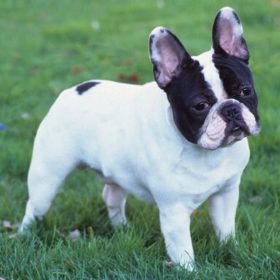 French Bulldog
French Bulldog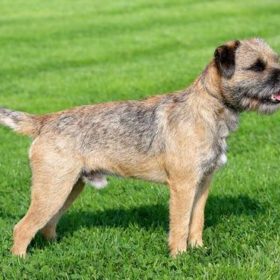 Border Terrier
Border Terrier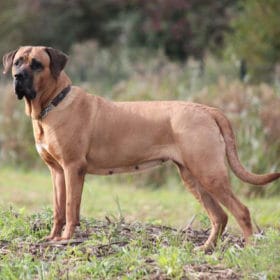 Tosa
Tosa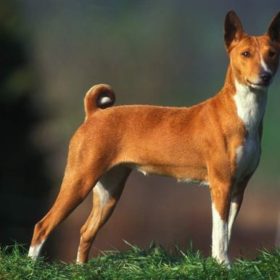 Basenji
Basenji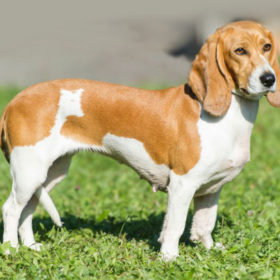 Small Schwyz Hound
Small Schwyz Hound Miniature Pinscher
Miniature Pinscher